

Education Week. Today's guest post is written by frequent Finding Common Ground blogger Lisa Westman.
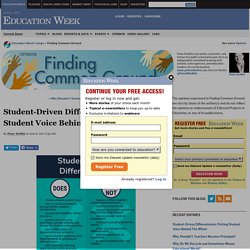
Lisa is an instructional coach specializing in differentiation for Skokie School District 73.5 in suburban Chicago. She taught middle school gifted humanities, ELA, and SS for twelve years before becoming a coach. 50+ Tools for Differentiating Instruction Through Social Media. Imagine a world where resources were limited to what was found in the classroom or the school closet known as the "Curriculum Materials Room.

" Picture a world where students wrote letters with pen and paper to communicate with other students and adults outside of the building. Due to postage costs, the teacher either sent the letters in bulk or paid for stamps out of his or her own pocket. 10 Ways to Differentiate Instruction with Technology. By Heidi Raki Differentiation and technology integration are two hot topics in education right now.
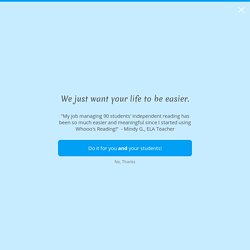
They’re also two of my specialties, so I’d love to share 10 ways I like to differentiate instruction using technology. These strategies and technology resources are purposely not specific to grade level or subject, in an effort to be valuable to teachers of all grade levels. And because everybody’s technology situation is different, I have provided you with additional differentiated instructions in case you have just one computer in your classroom.
These suggestions will also be appropriate to classrooms with two or three computers, any number that allows for small groups to share a computer. 1.
Methods of Differentiation in the Classroom. It’s a term that every teacher has heard during their training: differentiation.
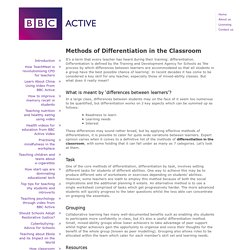
Differentiation is defined by the Training and Development Agency for Schools as ‘the process by which differences between learners are accommodated so that all students in a group have the best possible chance of learning’. In recent decades it has come to be considered a key skill for any teacher, especially those of mixed-ability classes. But what does it really mean? Differentiated Instruction Strategies. Myth-Busting Differentiated Instruction: 3 Myths and 3 Truths. In third grade, my daughter struggled with problems like 36 x 12, and she knew her multiplication facts.

Fortunately, her math tutor recognized what was needed, and introduced the Lattice Method. For some educators, the Lattice Method is controversial. Just read some of the FB comments. After multiple failed attempts, this strategy made a difference for my daughter. She rediscovered her confidence in math.
5 Google Apps that Help Teachers Differentiate Instruction. Meet Janelle, an intelligent, creative, computer-literate animator in training, who is a self-motivated sophomore.
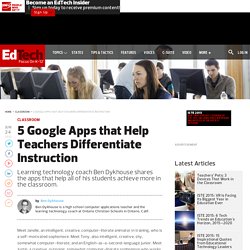
Meet Tony, also intelligent, creative, shy, somewhat computer-literate, and an English-as-a-second-language junior. Meet Justin, a creative, outgoing, somewhat computer-literate sophomore who works as a DJ on the side. I could go on, describing 20 students in the same high school class who have very diverse interests, talents and learning styles. Differentiating Instruction with Technology: A Framework for Success - an EdWeb Webinar. Thursday, Apr. 23 at 4 p.m.
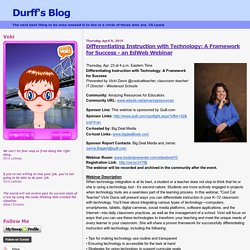
Eastern Time Differentiating Instruction with Technology: A Framework for Success Presented by Vicki Davis @coolcatteacher, classroom teacher/ IT Director - Westwood Schools Community: Amazing Resources for Educators Sponsor Line: This webinar is sponsored by Quill.com Co-hosted by: Big Deal Media The webinar will be recorded and archived in the community after the event.
Webinar Description. Student-Driven Differentiated Instruction with "I Choose" How it's done: Definitions I Choose is a 30-minute block of time during the day that allows fourth, fifth and sixth grade students to rotate through various interventions within RTI or attend their choice of electives including peer tutoring, library, physical education, computers, or music.
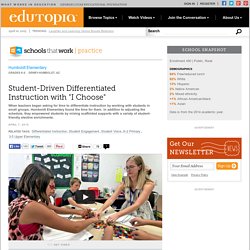
The program allows teachers the time for the differentiation they'd requested and gives the students a mix of valuable supports and enjoyable enrichments. Generating Motivation "We knew when we got together that motivation is a huge aspect to student achievement," says former Principal Cole Young. By allowing students to choose how they wanted to spend the last half hour of their day, Humboldt empowered them in terms of both their activities and their learning. What Is Competency-Based Learning? What Is Competency-Based Learning?
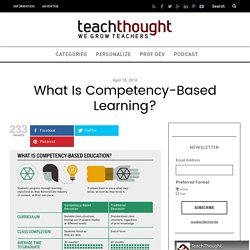
By TeachThought Staff Competency-based learning is an approach to education that focuses on the student’s demonstration of desired learning outcomes as central to the learning process. There's No Time to Differentiate: Myth-Busting DI, Part 2. The microwave oven is a great timesaver for getting any food on the table.
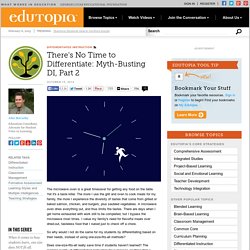
Yet it's a taste killer. The more I use the grill and oven to cook meals for my family, the more I experience the diversity of tastes that come from grilled or baked salmon, chicken, and burgers, plus sautéed vegetables. A microwave oven dries everything out, and thus limits the tastes. Students Matter: 3 Steps for Effective Differentiated Instruction. Differentiated instruction (DI) is a vast system in which it is difficult for many teachers to find a foothold for supporting students in a meaningful way.
Teachers want and expect everyone to succeed, yet the means to that end can be foggy at best. How can we ensure that planned learning experiences have a significant and positive impact on student learning? We can answer this question with three important guidelines that will transform student learning experiences through meaningful differentiation. Differentiated Instruction Strategies.